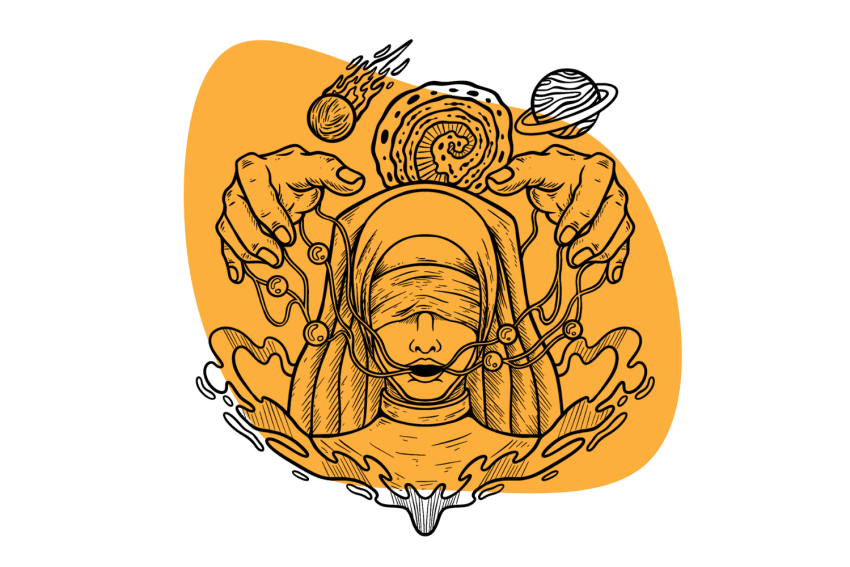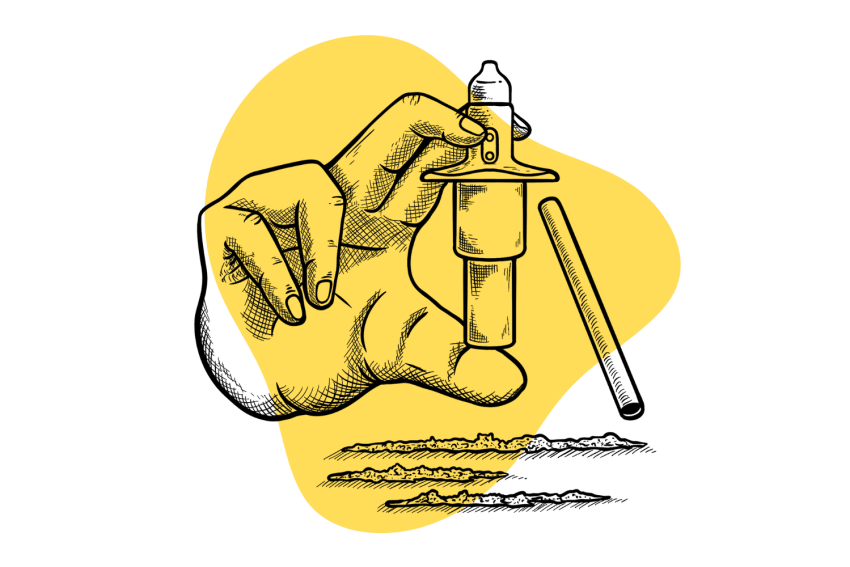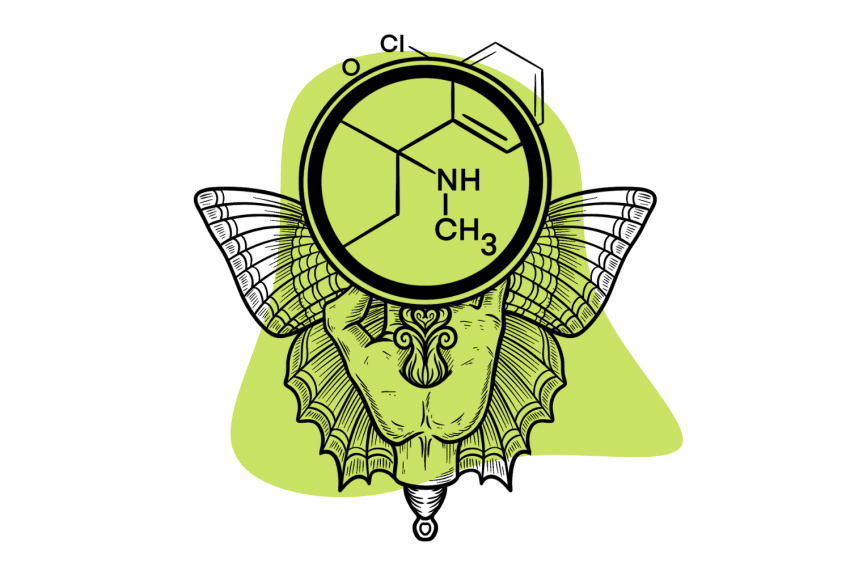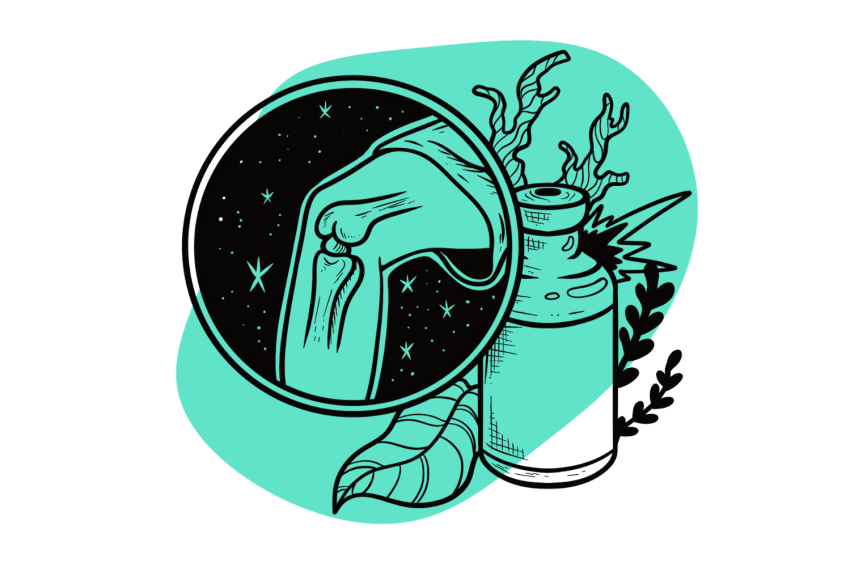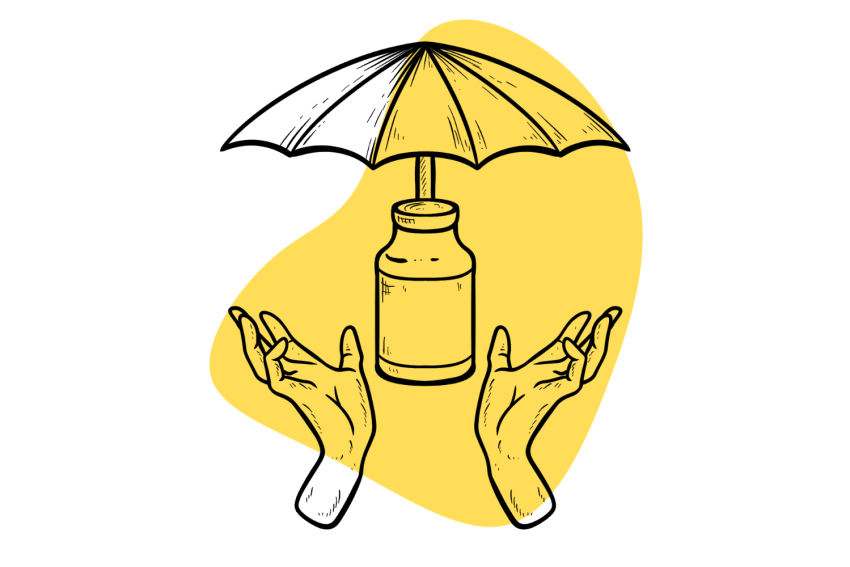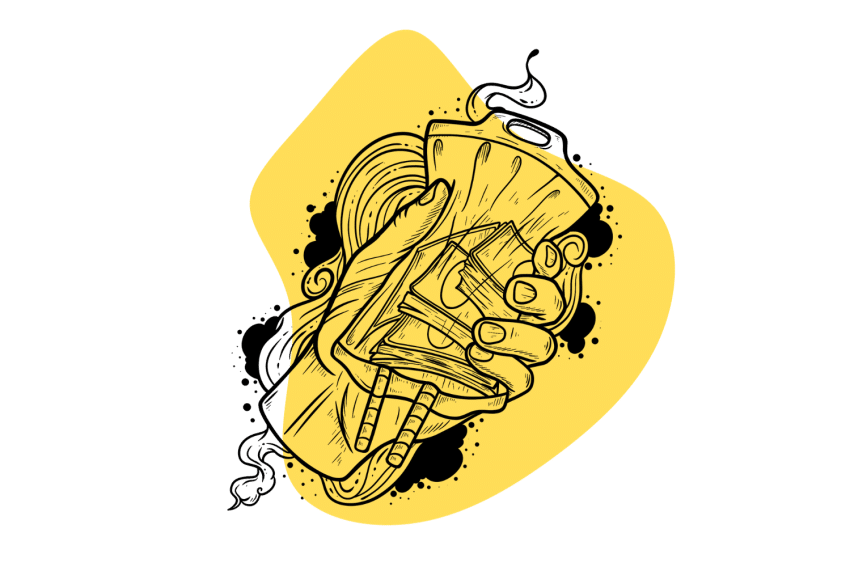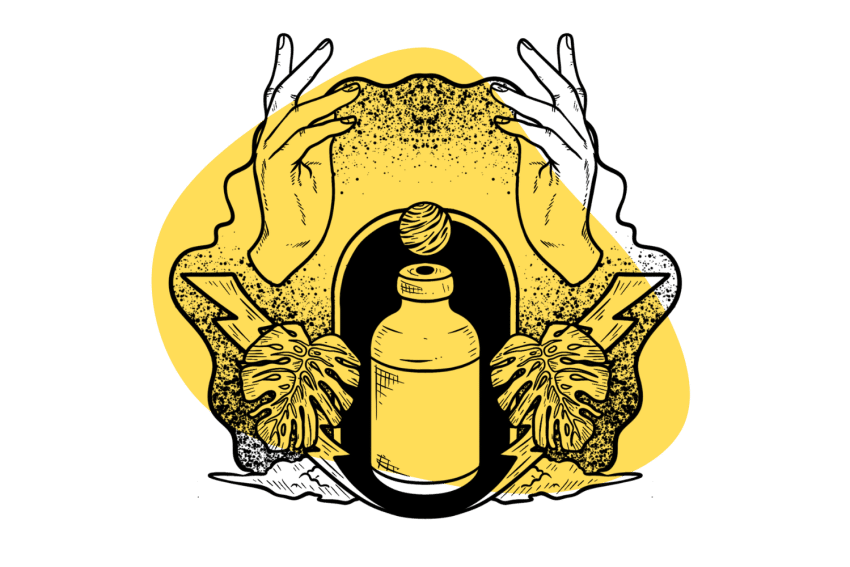Can You Overdose on Ketamine? What Are the Signs & Symptoms?
Ketamine, like any drug, legal or otherwise, comes with risks, including the potential to overdose.
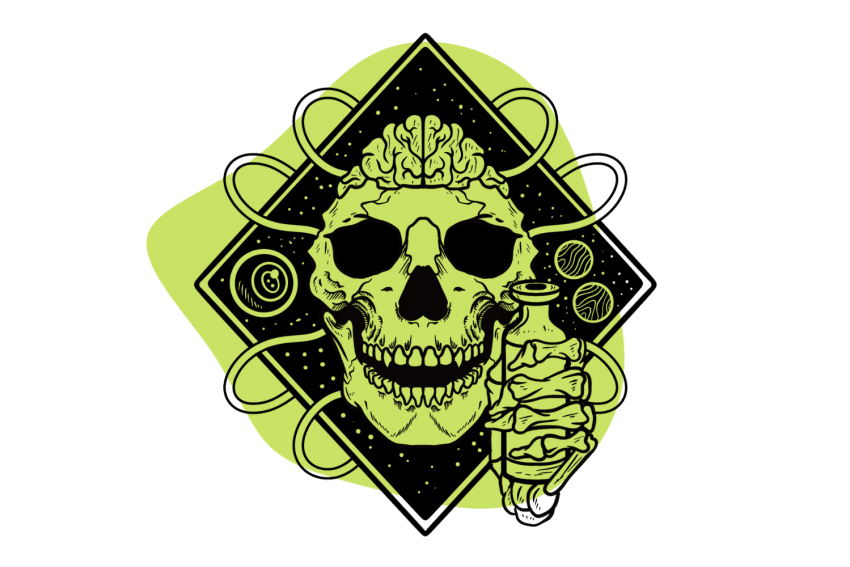
Yes, it’s possible to overdose on ketamine.
Too much ketamine can slow breathing to dangerous levels and cause heart, liver, and kidney complications. Researchers note that overdose from ketamine alone is rare and typically occurs only in combination with other substances [1].
One infamous ketamine overdose story is the video of a Chinese girl snorting a massive, several-meter-long line of ketamine in what is apparently a ketamine contest. News reports from the time assert she died shortly afterward. It’s unknown if multiple substances were involved.
Injecting ketamine could, in theory, lead to an overdose, but it is not common in medical settings. One case study documents the administration of ten times the regular dose due to a practitioner error. The 50-year-old patient took a while to wake up but was discharged without incident.
Serious adverse reactions to ketamine have occurred in people with underlying conditions, such as undiagnosed cardiovascular disease. Deaths are higher in white males with a history of substance abuse [2].
Sometimes, external circumstances, like driving or negligent administration of the drug, can be the cause of deaths where ketamine is involved. Several people have died in the bathtub.
As of 2024, there are currently no known overdoses that have occurred in ketamine clinics [3].
Ketamine Overdose Symptoms
This article can’t replace professional medical advice. Call emergency services immediately if you believe someone is overdosing.
A paper on ketamine toxicity lists symptoms of ketamine overdose as [4]:
- Apnea (stopping breathing)
- Coma
- Heart attack
- Hypotension (low blood pressure)
- Respiratory depression (slow, labored breathing)
- Seizure
- Stupor
Other symptoms of general ketamine intoxication, but not necessarily overdose, include:
- Abdominal pain or tenderness
- Anxiety
- Arrhythmias
- Ataxia (poor coordination)
- Chest pain
- Confusion
- Disorientation
- Dizziness
- Dysphoria (unease)
- Hypertension (high blood pressure)
- Lower urinary tract symptoms
- Nausea
- Palpitations
- Paranoia
- Sedation
- Slurred speech
- Tachycardia (rapid heartbeat)
- Vomiting
A ketamine overdose, in the context of this article, does not mean the k-hole. The k-hole is taking enough ketamine to dissociate completely from consensus reality, which can be thought of as an out-of-body experience. While some might consider that an overdose, here we are looking at how much ketamine one would have to take to be seriously harmed.
Are K-Cramps a Sign of Overdosing?
A common symptom of ketamine use, usually with those with chronic habits, is abdominal pain, or “k-cramps.” These are usually a sharp, shooting sensation in the abdomen, similar to a muscle cramp. They can be extremely painful.
The exact cause of k-cramps is unknown. Some suspect it has to do with ketamine’s detrimental effects on the bladder, especially with chronic use, but this is poorly understood. It’s also possible that damage to other organs, like the kidneys or liver, could be causing the pain.
Usually, people experiencing k-cramps have a serious habit of consuming over a gram per day.
While k-cramps are scary and should be regarded as a warning sign from the body, they typically dissipate after a few hours. In rare cases, they can last longer.
K-cramps do not necessarily indicate an overdose, but again, this blog post can’t diagnose anything. If you or someone you know is on drugs and in pain, contact medical help and explain the situation in full.
Can You Reverse a Ketamine Overdose?
There is no drug approved by the FDA (or that Tripsitter is aware of) that can reverse the effects of a ketamine overdose. However, some medications can help stabilize patients until they have a chance to recover.
While ketamine does interact with kappa opioid receptors, using naloxone or Narcan does not reverse ketamine’s effects, according to one study [5]. Naloxone is used to quickly reverse opioid overdoses by temporarily removing opioids from receptor sites.
That said, what appears to be overdosing after taking ketamine could be a reaction to opioid adulterants in ketamine. It may help and could be worth trying if naloxone is available and the drugs taken have not been tested.
In some cases, ketamine may trigger psychosis in people with certain mental health conditions like schizophrenia. In such events, emergency departments can administer drugs like benzodiazepines to calm patients and lessen symptoms.
Related: Ketamine Reversal Agents
How to Manage Ketamine Overdose
If you are concerned that you or someone else is overdosing, call emergency services immediately.
Do not delay — a few minutes can save a life.
One serious concern for high-dose ketamine is vomiting. In writing this article, we read several close calls with users almost choking on their vomit while k-holing. Others report losing friends this way, and the medical literature also documents fatalities from vomit.
Never k-hole alone. If someone has lost consciousness and is vomiting, or you are worried they will vomit (and you should be), put them in the recovery position.
The following recovery position can prevent choking:
- Bend the top knee so the foot is flat on the floor.
- Place the top hand under the person’s cheek
- Roll onto the side, with a bent knee on top bent at ninety degrees. The hand under the cheek supports the head.
- Tilt their head back and chin up to keep the airway open.
Keep a close eye on whether their airway is open. While ketamine usually doesn’t cause airway obstruction, it can happen, meaning someone may need to be intubated by professionals [6].
Ketamine was initially an anesthetic as it has far fewer effects on breathing than other anesthetics. A risk with downers is that someone’s respiration rate drops so low they cannot get enough oxygen, and, in some cases, breathing may stop altogether.
Medical professionals can assist with breathing, utilize specific medications to modulate blood pressure or cardiovascular concerns and have the proper tools and training for monitoring or resuscitation.
Alcohol & Ketamine
Combining alcohol and ketamine is a common but dangerous practice. These two drugs both work by depressing the central nervous system with synergistic, potentiating effects. Taking them together makes the effects stronger for both drugs — but it also dramatically increases the risk of side effects and overdose as well.
Alcohol and ketamine both modulate glutamate and GABA, potentially altering cognition and memory. It’s also suggested both drugs’ effects on the liver, kidneys, and urinary tract could work together to potentiate harmful effects [7].
Global Drug Survey documented using ketamine and alcohol together also causes more irritation of the urinary tract.
A significant number of ketamine deaths involve alcohol, and these substances have the potential to slow breathing to dangerous levels.
Ketamine & Benzos
During medical procedures, including some ketamine infusions in clinics, various benzodiazepines are used to prevent the “emergence” phenomenon, a term early researchers coined to describe ketamine’s psychedelic effects.
Benzodiazepines and ketamine can be safely combined when done by professionals. Recreational users certainly do this as well, but like alcohol, stacking depressants comes with severe risks like cardiac concerns, along with respiratory and CNS depression. Fatalities have occurred from combining benzos and ket.
Appropriate dose ranges depend on someone’s tolerance to these drugs, although in hospital settings, 2-4 mg of lorazepam are given intravenously or intramuscularly, and 5-10 mg of diazepam are used with IV [4].
Ketamine & Opioids
Much like the above two, combining opioids and ketamine can be risky, potentiating each other’s effects. While the two drugs can be mixed safely in a medical setting, only trained medical professionals should do this [8].
Respiratory depression and complications with heart rate and blood pressure are also possible since ketamine has stimulating effects and opioids have a depressant effect.
Like benzos, dose ranges can vary considerably depending on individual tolerance, which develops rapidly for both ketamine and opioids.
The safest route is to avoid using these substances at the same time.
Related: Is Ketamine An Opioid?
Who Should Avoid Ketamine?
For some people, ketamine is never a good idea in any amount.
Anyone with any of the following should avoid ketamine:
- Personal or family history of schizophrenia or psychosis
- Cardiovascular disease, including hypertension
- Bladder, kidney, or liver disease
- Substance abuse disorder
- Pregnant or nursing
- Allergic to ketamine or other arylcyclohexylamines
FAQs: Ketamine
We can’t cover everything in one article, but here are some FAQs we get about ketamine use.
1. Can You Die from Ketamine?
Yes, it’s possible to die from taking too much ketamine.
Deaths involving ketamine typically involve multiple substances. Combining ketamine with depressants like alcohol and benzos is risky. Other deaths occur from risky behavior while intoxicated, such as driving or taking a bath.
Some deaths also involve adulterants or mixing up of substances. Please test your drugs, and don’t get high alone.
2. How Long Does Ketamine Last?
Ketamine can last from fifteen minutes to several hours, depending on the dose, route of administration, and your body. Factors like metabolism, gender, genetics, and many others are at play.
A k-hole experience can last about fifteen minutes to over an hour.
Someone who has overdosed should be observed for many hours. Always immediately contact medical professionals in the event of a suspected overdose.
3. How Much Ketamine to K-Hole?
How much ketamine one needs to take to enter the k-hole depends on one’s tolerance and body.
Inexperienced users with no tolerance should start small, first figuring out their threshold without k-holing. A reasonable place to start is with a dose of 10-25 mg.
Try larger doses only once you know how smaller amounts affect you. Dropping in the k-hole will likely take well over 100 mg of ket and significantly more for users with tolerance.
Only k-hole with a sober sitter. It is possible to choke on your vomit or to have complications due to undiagnosed medical conditions.
4. What Is the LD50 of Ketamine?
In humans, the LD50 of ketamine is approximately 60 mg/kg, or 4.2 g for a 70 kg person. There are cases where up to ten times the maximum analgesic dose has been administered, and it has not caused death. Even in pediatric overdose cases, there has seemed to be no harm from up to one hundred times the therapeutic dissociation dose, except for protracted dissociation. [9]
Does this mean using large amounts is okay, and you’ll walk away unharmed? No. Ketamine, like other drugs, is unpredictable, and bad things can — and do! — happen, so please be responsible!
Subscribe to Tripsitter: Newsletter & Podcast
Unlock Your Mind: Subscribe for Expert Insights on Psychedelics 🍄🌵
References
- Bokor, G., & Anderson, P. D. (2014). Ketamine: an update on its abuse. Journal of pharmacy practice, 27(6), 582-586.
- Corkery, J. M., Hung, W. C., Claridge, H., Goodair, C., Copeland, C. S., & Schifano, F. (2021). Recreational ketamine-related deaths notified to the National Programme on Substance Abuse Deaths, England, 1997–2019. Journal of psychopharmacology, 35(11), 1324-1348.
- Chaves, T. V., Wilffert, B., & Sanchez, Z. M. (2023). Overdoses and deaths related to the use of ketamine and its analogues: a systematic review. The American Journal of Drug and Alcohol Abuse, 49(2), 141-150.
- Orhurhu VJ, Vashisht R, Claus LE, et al. (2023) Ketamine Toxicity. StatPearls Publishing
- Mikkelsen, S., Ilkjaer, S., Brennum, J., Borgbjerg, F. M., & Dahl, J. B. (1999). The effect of naloxone on ketamine-induced effects on hyperalgesia and ketamine-induced side effects in humans. The Journal of the American Society of Anesthesiologists, 90(6), 1539-1545.
- Capape, S., Mora, E., Mintegui, S., García, S., Santiago, M., & Benito, J. (2008). Prolonged sedation and airway complications after administration of an inadvertent ketamine overdose in emergency department. European Journal of Emergency Medicine, 15(2), 92-94.
- Kobayashi, N. H. C., Farias, S. V., Luz, D. A., Machado-Ferraro, K. M., Conceição, B. C. D., Silveira, C. C. M. D., … & Maia, C. D. S. F. (2022). Ketamine plus alcohol: what we know and what we can expect about this. International journal of molecular sciences, 23(14), 7800.
- Sveticic, G., Eichenberger, U., & Curatolo, M. (2005). Safety of mixture of morphine with ketamine for postoperative patient‐controlled analgesia: an audit with 1026 patients. Acta anaesthesiologica scandinavica, 49(6), 870-875.
- Riccardi, A., Guarino, M., Serra, S., Spampinato, M. D., Vanni, S., Shiffer, D., … & De Iaco, F. (2023). Narrative Review: Low-Dose Ketamine for Pain Management. Journal of Clinical Medicine, 12(9), 3256.

